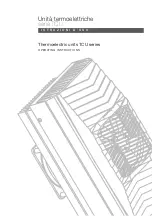
100c
User Manual
34
ch
.
5
HANDS ON: Grind your electrode so that grind marks run
parallel to the electrode shaft . Verify by looking under the
microscope . Try to produce a taper that is approximately 2 .5x
the electrode diameter .
ELECTRODE SHAPING EFFECTS
There are two main electrode shape configurations that Orion users should consider when
preparing for a new project . The first is the sharp electrode, which is the best for most applications
and metals . A sharp electrode is also the easiest to ignite and typically produces a good weld
spot . A sharp electrode is especially important for small parts where fine control is essential .
The second electrode shape is a flat ended tip . This tip helps spread the energy more uniformly
and is better suited for difficult metals like silver . A combination of a pointed electrode with a
small flat tip can also be useful for a variety of metals . This configuration will help improve arc
properties for silver (and like metals) while still allowing smaller parts to be welded .
As a general rule of thumb you can think of a sharp tip as a
weld focuser while a blunted or truncated tip is a weld un-
focuser. The tip shape changes the energy focus and weld
penetration. The weld spot on the left was formed with a blunt
electrode, while the spot on the right was made using a sharp
electrode.
The shape of the electrode will influence the shape and penetration of the weld spot. There are
advantages and disadvantages to each electrode shape.
As shown in the illustration above, the electrode shape greatly influences the weld spot’s shape
and penetration . By looking at the figure, one might assume that the 180 degree shape is the
best electrode configuration to achieve an optimal weld spot . However, the 15 degree electrode
shape has the advantage of easy weld ignition at lower energy levels . In some situations it is
advantageous to place a small flat on the end of the sharper tip – or truncate the weld tip . This
has a stabilizing effect on the arc and also allows deeper weld penetration . Even a small flat on an
otherwise sharp electrode can be helpful in making repeatable welds while still allowing easy arc
ignition . For the smaller energy settings an extremely sharp electrode is essential . Remember
the size of the truncation flat is related to the energy setting . Use smaller flats for lower energy –
larger flats for high energy .
There are several considerations that can be helpful when selecting electrode shape (e .g . sharp,
blunt, or a sharp tip with a small flatted end) . The most helpful of these is to spend time with the
Orion and get to know how it responds to different electrode shapes and metals .
















































